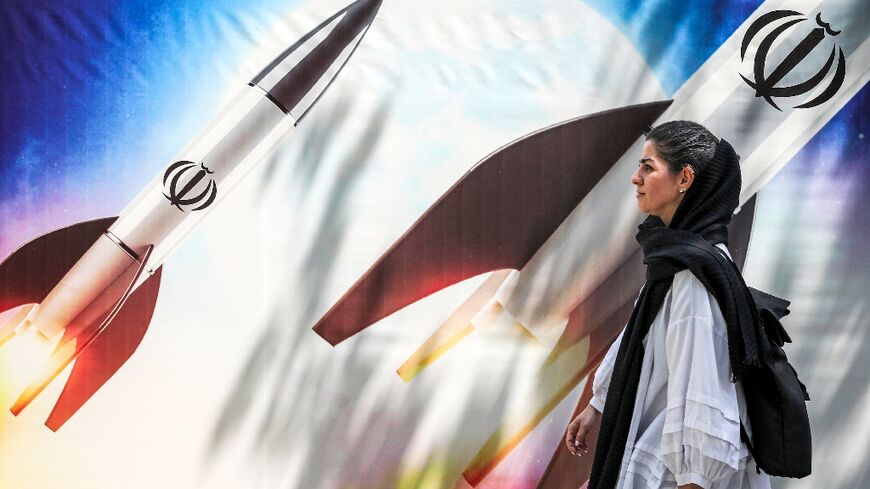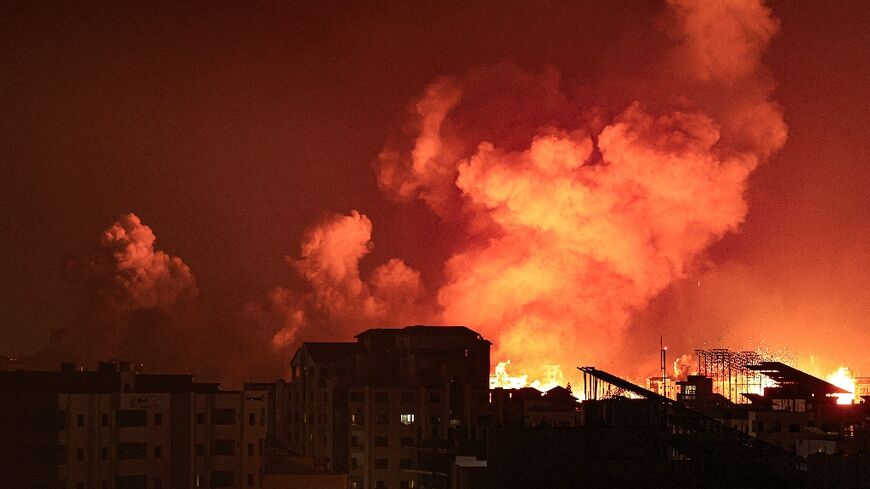War of narratives: Syrian imagery falsely illustrates Gaza

A video of bloodied Syrian school children shrieking after an explosion was misrepresented online as an atrocity in Gaza, throwing a spotlight on a disinformation trend researchers say dehumanises victims of both wars.
A flood of real images from Israel and Gaza has been revealing the horrors of the conflict that broke out on October 7 when Hamas militants launched an unprecedented attack on southern Israel, but they can vie for attention with misappropriated scenes from Syria's civil war.
AFP fact-checkers have debunked many social media posts mislabelling videos and photos from Syria, some dating as far back as 2013, in a war of distorted narratives playing out in tandem with the actual fighting between Israel and Hamas militants.
A teacher's footage of the terrified schoolchildren, like other clips misrepresented online, was meant to catalogue Syria's long-running civil war under President Bashar al-Assad which erupted in 2011.
It captured artillery shelling by the Syrian regime on December 2 this year in the village of Afes, which the White Helmets rescue group operating in rebel-held areas of northern Syria told AFP sent shrapnel flying into classrooms and injured several students.
One teacher later died from her wounds sustained in the bombing.
But social media users, some with vast followings, falsely claimed it showed atrocities hundreds of miles (kilometres) away in the Gaza Strip, where Israel is pressing its military offensive against Hamas.
Some posts on X, formerly Twitter, wrongly asserted the video showed Israeli snipers shooting the children.
The school principal Kenan Masoud, who told AFP he was struggling to restart the school and remained haunted by the screams of the children, called the disinformation "sad and disgusting".
"Pictures of children and the wounded are not a commodity for sale," he said.
- 'True horrors' -
Ismail al-Abdullah, a White Helmets volunteer, said the mislabelling undermines "the gravity of the true horrors faced by civilians" in both the Palestinian territory and Syria.
"Our story is not fiction that people can simply change to make up another story," he told AFP.
The mislabelled school clip appeared to compete online with real images of Gaza's children -- among the worst affected by the deadly war -- often taken by professional journalists at great risk.
The misappropriated visuals, experts said, obscure the plight of civilians in both war zones while also clouding the public's understanding of the conflicts.
One video, which posts said showed horrors in Gaza, actually depicted a Syrian boy in 2014 sobbing for siblings who were killed. Another 2013 photo showing dead Syrian children was similarly misrepresented online, including by a US congresswoman.
"The point of disinformation is not just to get you to believe a falsehood, but to polarise you against the 'other side'," Lee McIntyre, a research fellow at Boston University, told AFP.
"Disinformers tend to gravitate toward images that have high emotional content. It doesn't matter whether these images are from the current conflict or a past one."
Those recycling old images include prominent influencers with a history of denying the Syrian regime's atrocities, including its well-documented use of chemical weapons on its own people, according to the digital investigative group Bellingcat.
Many creators sharing such disinformation on X are exploiting an ad revenue sharing programme that researchers say incentivises false, extreme content designed to boost engagement.
Among them is far-right US influencer Jackson Hinkle, who in November shared an image of a woman holding a toy car and descending stairs of a shrapnel-scarred building, with the caption: "You CANNOT BREAK the Palestinian spirit."
The image was actually taken in 2016 in the Syrian city of Homs, AFP fact-checkers found using reverse image searches.
- 'Shadows of doubts' -
"The danger of mislabelling is that it falls into the hands of detractors and gives them an easy way to dismiss legitimate claims," said Roger Lu Phillips, legal director at the Syrian Justice and Accountability Centre.
Mislabelling of real visuals such as the Afes school clip is not new, with old imagery being misused online to illustrate other war zones such as Ukraine.
The misrepresentation is "often done for propagandistic purposes" and other times "out of sheer laziness", said Phillips.
Such disinformation "casts shadows of doubts in people's hearts", said Ranim Ahmed, from the human rights group The Syria Campaign.
It could, she added, compel onlookers to "choose silence over showing solidarity or speaking out for human rights".
The confusion over what is truly from the current conflict also imperils future war crimes investigations, experts said.
"It's important to approach imagery with an element of caution," Sophia Jones, a Human Rights Watch researcher, told AFP.
Such falsehoods "contribute to a dangerous lack of trust in all imagery and events unfolding on the ground" even when there are documented instances of abuses and war crimes.






